White bass are one of the most underrated fish when it comes to ice fishing. I am still trying to wrap my mind on why that might be. A good day of fishing for white bass through the ice will quickly yield a limit, and pound for pound these fish fight as hard as any fish swimming. And it is possible to bring up some real lunkers.
White bass do not have a reputation for being a great tasting fish — a distinction not deserved. The key is to get the fishy tasting red meat out of the fillet. After that, you are left with a delightful fillet full of flavor. But, before you can think about cooking up a plate, you need to know how to catch them.
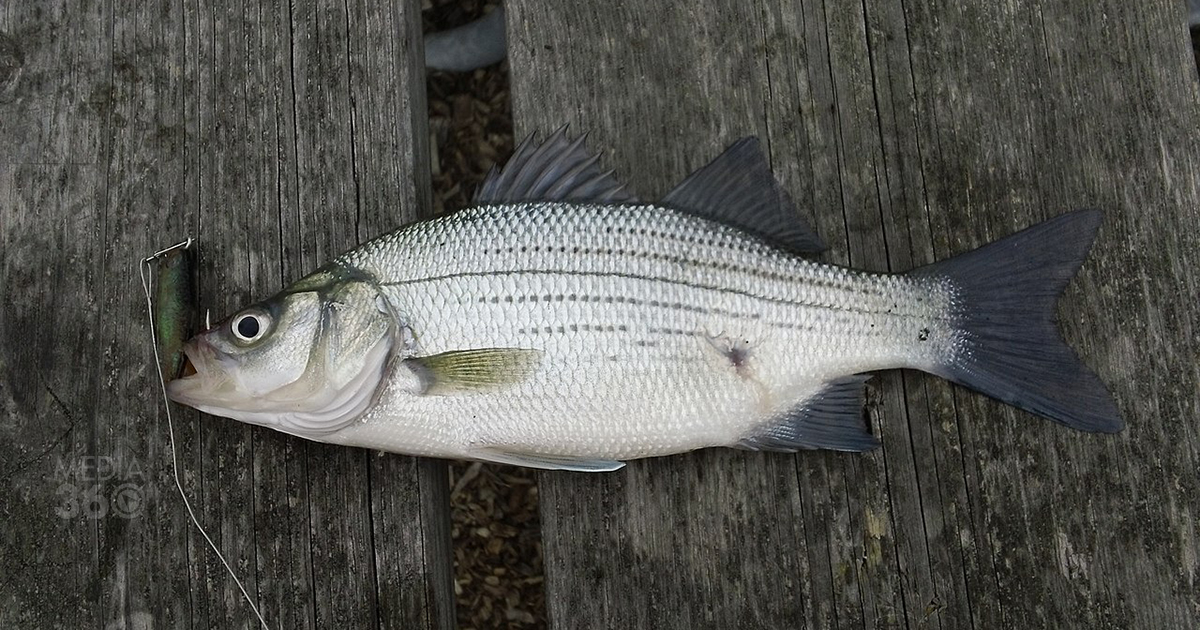
The trick is to find where the bass are, and they’re always on the move. On large lakes, the process starts by drilling holes in a grid over deep water. Since white bass are constantly moving, it can take some time to locate them. Plan to drill a lot of holes. It is easier to do with a group, drilling, scanning and covering water until the fish are located.
After the ice is covered with snow, the lack of sunlight will kill the vegetation. The lack of aquatic vegetation will cause the fish to move deeper. White bass lakes are traditionally dark or stained water. The fish tend to school up on points, shoals, flats and even around brush piles. Once you find a school, the action can be nonstop. But, when the school moves you can either drill more holes to try a relocate them, or you can wait them out.
Another time when you might need to cut many holes is when a cold front moves in or the weather gets really bad. This will likely cause the fish to move to deeper water. They will stay close to cover and might be tough to locate, thus the need for good electronics and an auger with sharp blades to drill many holes. When you do find them, be ready for a good time.
Some of the best advice when researching where to find white bass on a lake, and what bait to use, can be gathered at local bait shops. They hear what is happening on the ice and want you to catch fish. If you are catching fish, you will be back to buy more bait, coffee and snacks.
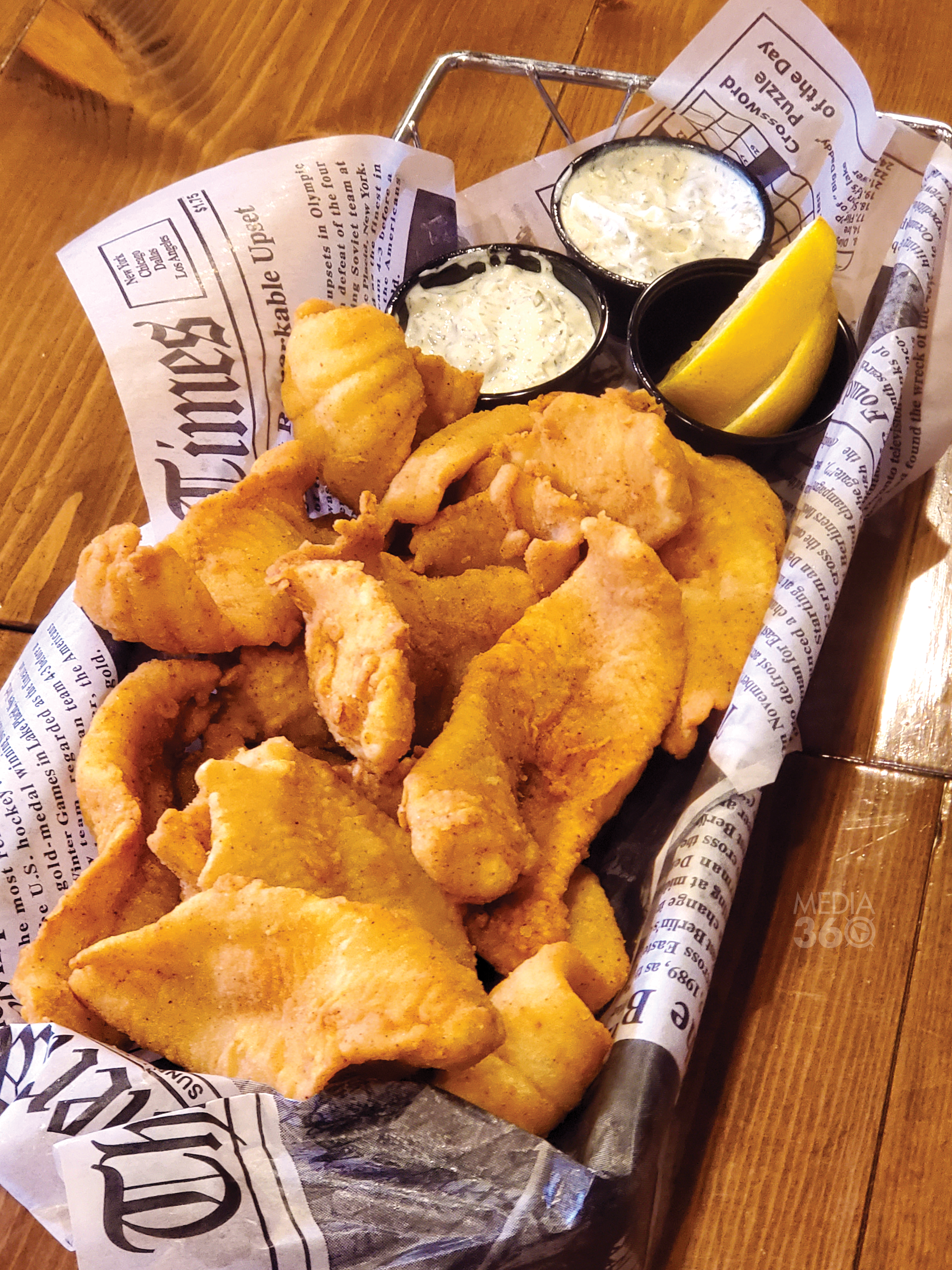
Just as important as the lure you choose, is having the gear to stay mobile as the fish move on. Some anglers rely on nothing more than a stool to sit on, their electronics and a couple of poles. I prefer to stay out of the elements and rely on a shelter to keep me comfortable. There are many one-man shelters on the market that are perfect for the run-and-gun style that white bass often dictate.
The X100 Thermal XT from Clam Outdoors is perfectly suited for the hustle and bustle of fishing for white bass. This shelter is a true flip-and-go shelter so that anglers can easily travel from spot to spot and flip over their shelter to start fishing. There is plenty of room in the sled for your rods, auger and other gear you might need to stay comfortable on the ice all day long.
A couple of 26- to 28-inch light- or medium-light-action rods with 4- or 6-pound-test line will be enough. This past season we used both the Dead Eye and Perch Seeker from St. Croix Rods. These rods are sensitive enough to feel the slightest bite, but still tough enough to pull the biggest white bass through the water.
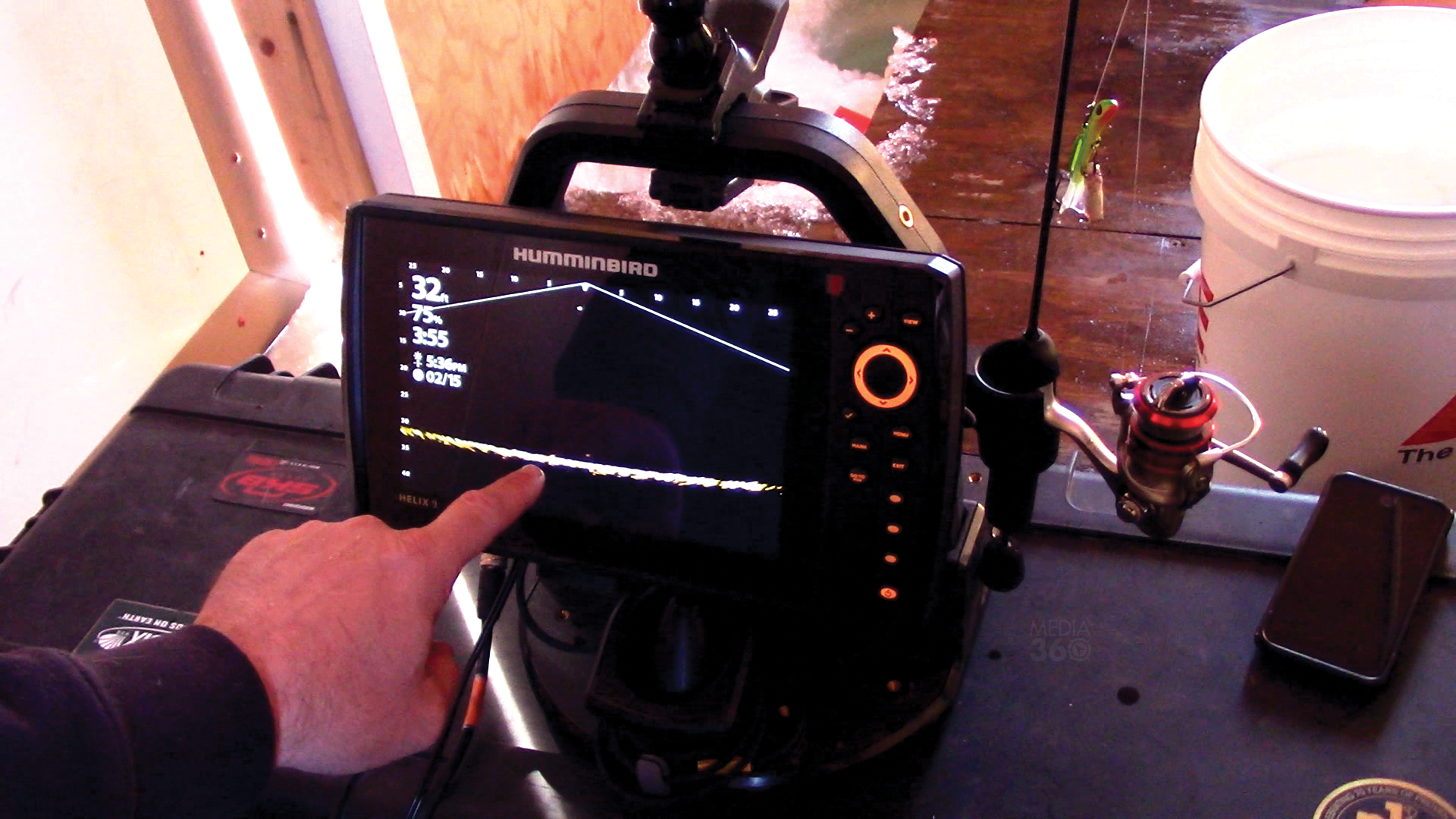
Utilizing a couple of rods allows you to tie a different jig onto each line so that you can find the best lure for the day, rather than retying every time you want to switch things up. It’s important to get your jig back down to the fish to keep their attention. Plus, the lighter your line, the faster your jig will drop down to the fish, which is important because white bass are constantly on the move.
There are many options available when it comes to what bait to use. For artificial bait, start with vertical jigging spoons. You can catch white bass on a variety of small ice spoons and jigs. Al’s Goldfish Spoons, small Jigging Raps, Salmo Chubby Darters, Rippin’ Raps also all work well. I have found over the years that orange and gold lures out-produce all other color combinations.
Tip these jigs with three or four spikes, waxworms or a minnow head. All you need to get the white bass to bite is some flash in your lure, the scent from the bait you tipped the hooks with, and some flavor for the fish to fully commit to taking the lure. You do not need to go overboard with loading your treble hooks with bait. More is not always better.
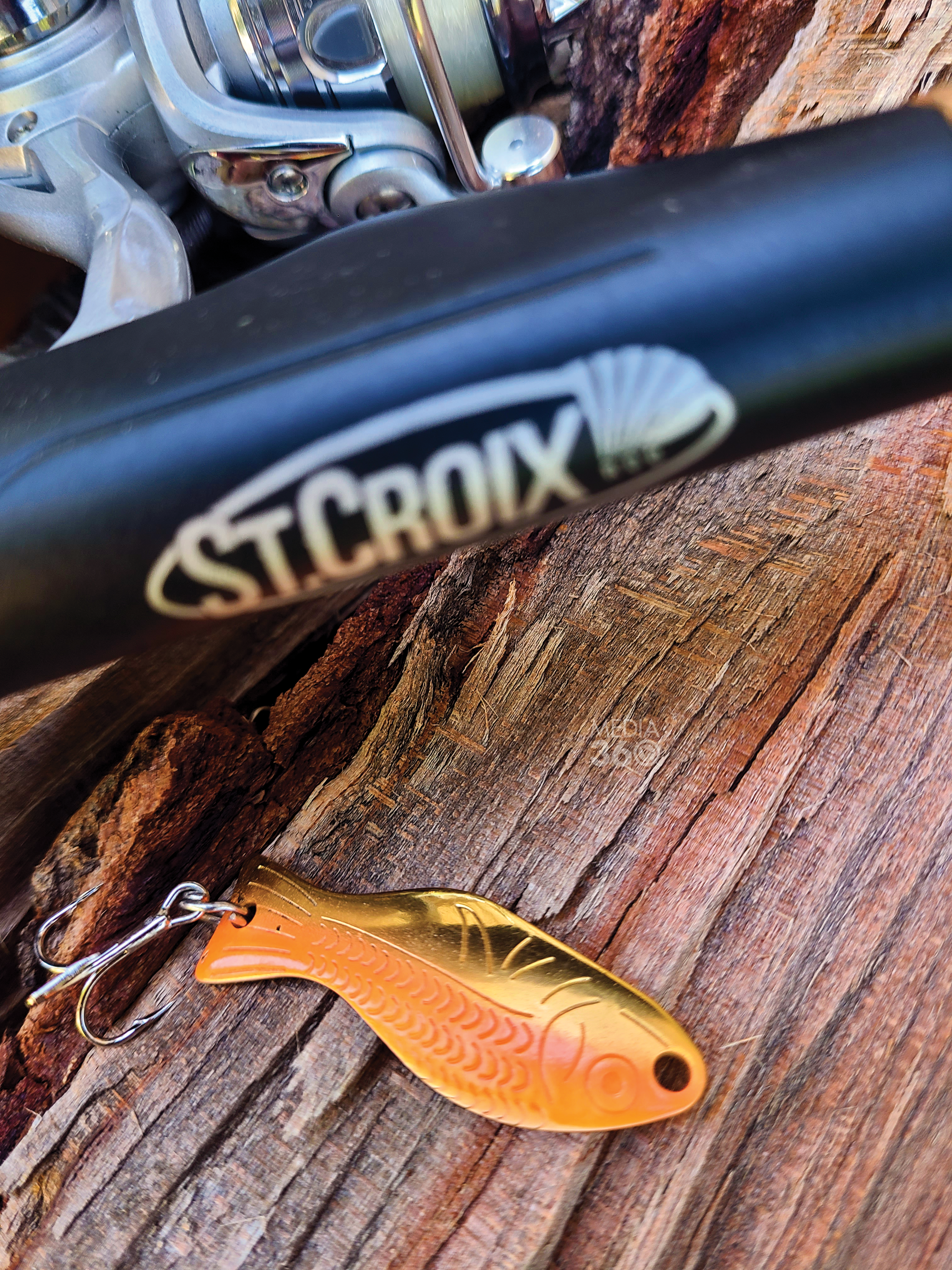
If the school has moved away, put on an entire minnow to try to grab their attention. Remember, white bass are not fussy when they get in a feeding frenzy.
To use ice jigs, slowly lower the bait toward the bottom. Be sure to work the bait down the hole using small hops and pauses to give the impression of being an easy meal. Continue to hop and pause the jig until you find an interested fish.
If you do not catch a fish on the downward fall, let the bait sit for a minute, then lightly jig it in a slow, smooth motion. Do your best to maintain a rhythm in your jigging. When you feel a bump, however small it might be, set the hook. The biggest white bass in the bunch tend to be the most aggressive. Just hover the lure and occasionally lift it slowly. Remember — you’re using light line so be very careful not to break it.
It is equally important to have a good fish locator. After your rod and reel, the most important item you can have as an ice fisherman is a sonar unit. It can be overwhelming deciding what sonar unit is best. There are many brands and styles on the market today, and the two main types to choose from are the flasher or LCD graph.
Flashers allow the angler to see what is happening with the fish and bait as it happens. The problem with flashers is that there is a learning curve when using them. LCD graphs provide the same information, just in picture form. The biggest problem I have noticed with graphs is that it can be tough to make out what you are seeing in low-light conditions.
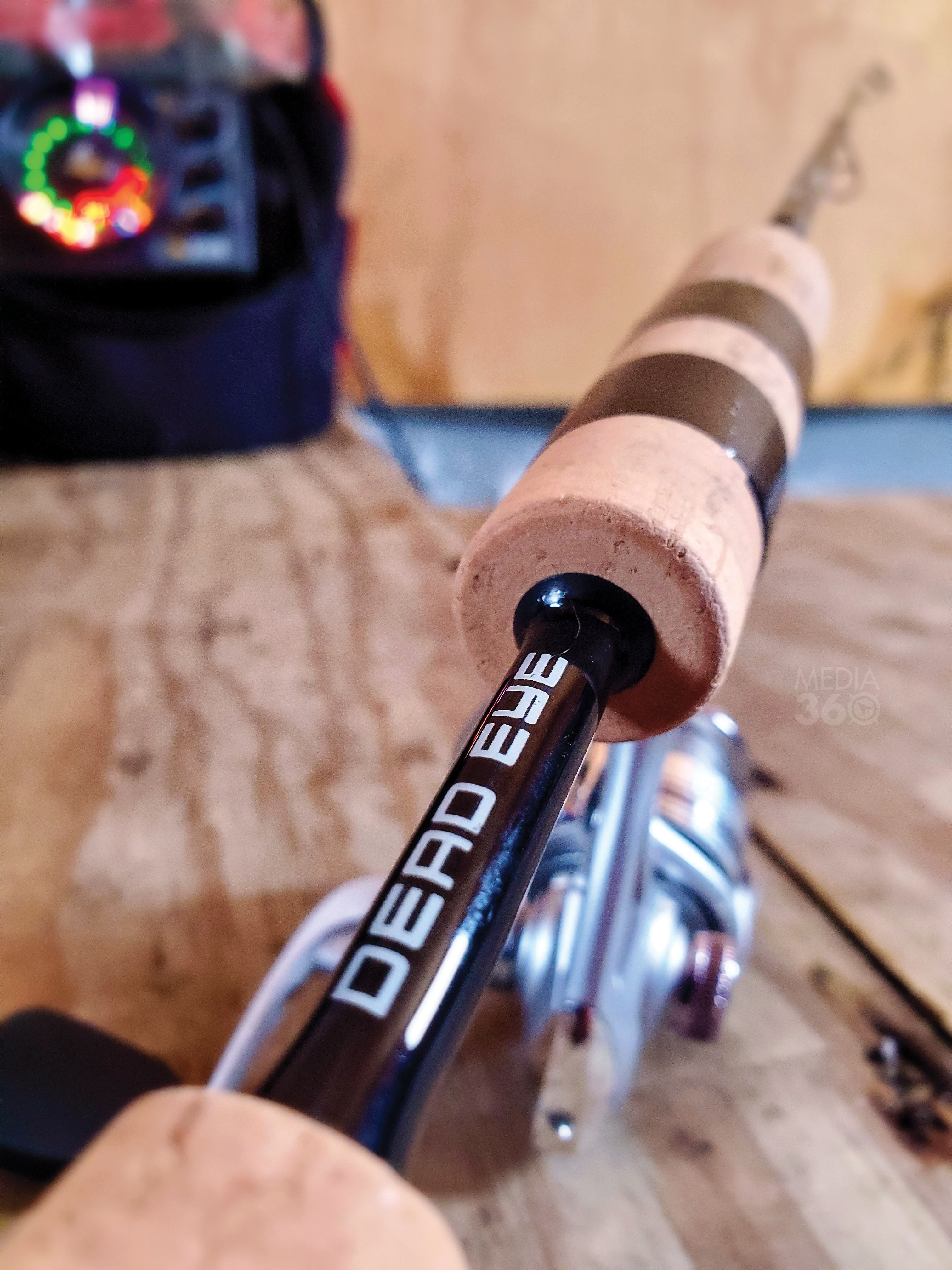
So, how do you use a flasher or LCD graph to help put more white bass on the ice? With your hole drilled and cleaned out, lower the transducer, then your lure. You might have to adjust the grain to see your lure in the water column. Electronics allow you to keep tabs on the fish below, the lure, structure and more.
You can actually use your sonar unit to entice fish to bite. Your sonar will tell you if there are fish near your lure. If there are none, jig the lure until you see a fish show up. At that point you can slow down your jigging or stop altogether and wait for the fish to strike. If they still won’t bite, gently pull your lure toward the surface. Keep your finger on the line and feel for a bite. Some anglers get in trouble by relying on the sonar too much. Remember not to set the hook by what you see on the screen of the sonar. You must wait until you actually feel the bite before setting the hook.
As mentioned earlier, white bass fishing is a run-and-gun style of fishing. You are likely going to have to drill a lot of holes before you find any fish. The sound of the auger cutting through the ice often disturbs and causes them to briefly move off. You might need to wait a few minutes after drilling a hole for the fish to return. A wide-angle transducer will help you see fish that might have scattered during the drilling.
Another good option is to use an underwater camera to see if fish are nearby. Lower your video camera down to within a couple of feet of the bottom and have a look. Not only will this tell you if fish are nearby, but also tell you exactly what species of fish are there.
The key to a successful white bass outing is simply finding the fish. Once you locate them, the hard part is over. White bass are not finicky eaters. It might take a few different lure choices to figure out what they want, but once you do — the action can be nonstop.


